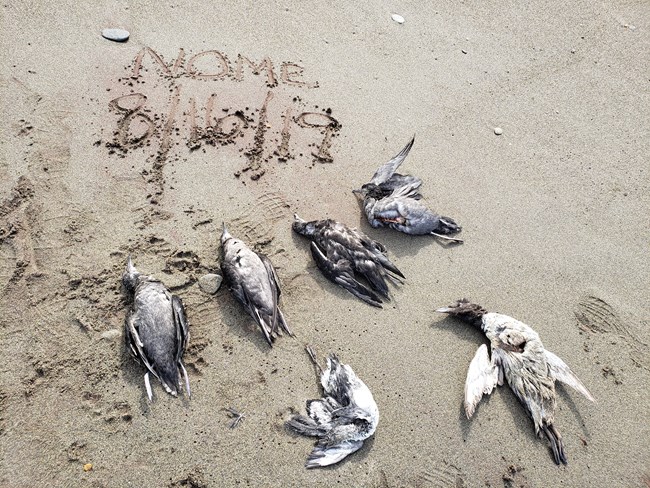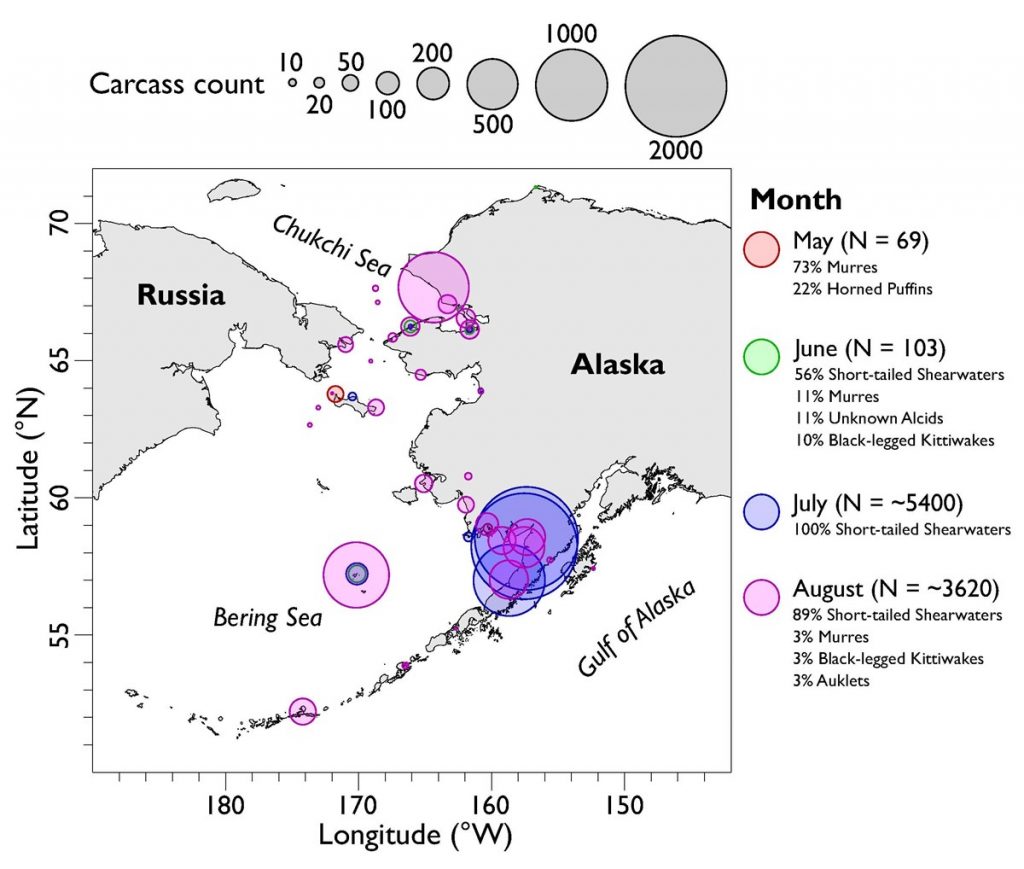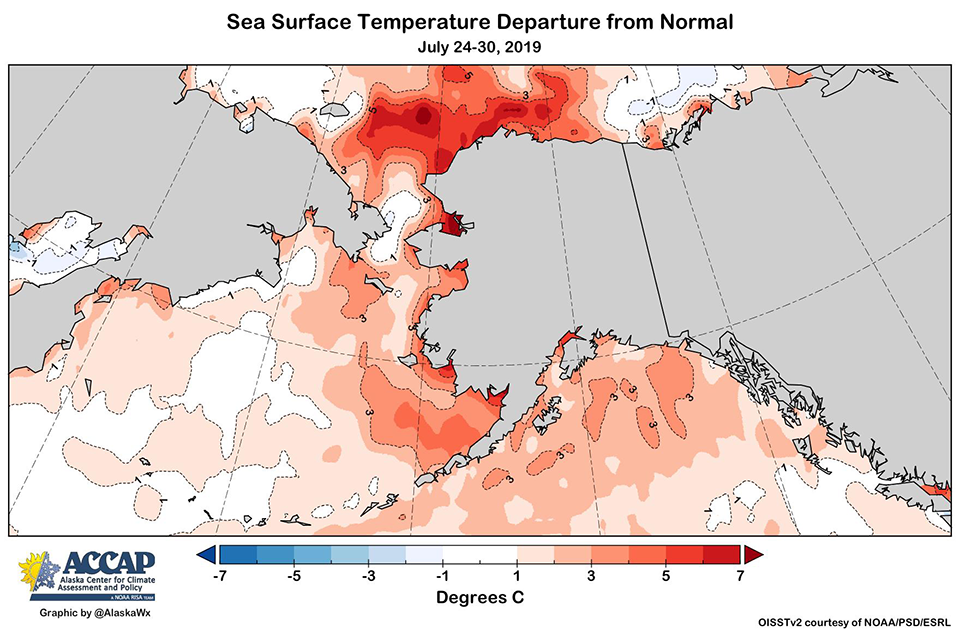(Photo © Sara Germain)
What’s Happening?
(Map provided by Coastal Observation Seabird Survey Team (COASST) coasst.org)
Historically, seabird die-offs have occurred occasionally in Alaska; however, large die-off events have occurred annually in Alaska since 2015. Bird carcasses examined during these die-offs were consistently determined to have died due to starvation.
Beginning in May 2019, the U.S. Fish and Wildlife Service (USFWS) began receiving reports of dead and dying seabirds from the northern Bering and Chukchi seas, followed by reports in late June and early August of thousands of short-tailed shearwaters washed up on beaches in the Bristol Bay region. By mid-August, the shearwater die-off had extended north along coastal Alaska north to the Chukotka Peninsula of Russia. Additional seabirds affected includes puffins, murres, and auklets, but at much lower numbers than shearwaters.
What’s Being Done?
(Graphic by ©AlaskaWx ACCAP)
The USFWS is coordinating with federal, state, tribal partners, as well as community members to collect reports and document these mortality events. With help from Alaska Sea Grant, Local Environmental Observation (LEO) Network, Aleut Community of St. Paul Island, and the Coastal Observation and Seabird Survey Team (COASST), we are tracking the number of birds involved, geographic area affected, and duration of the die-off event.
Seabird carcasses are being collected from multiple locations and sent to the U.S. Geological Survey (USGS) National Wildlife Health Center for examination and testing. Initial results from indicate starvation as the cause of death. Tissues sampled during examination will also be analyzed by the USGS Alaska Science Center for harmful algal bloom toxins and those results will be shared as they become available.







